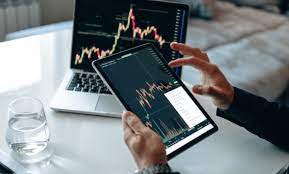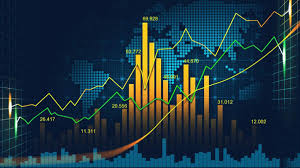
Proprietary trading, or prop trading, has long been a crucial part of the financial world. At its core, prop trading revolves around firms using their own capital to trade various financial instruments for direct profit. However, as technology advances and markets evolve, significant trends and innovations are reshaping this essential financial operation. Here, we’ll explore some of the most exciting developments investors and industry insiders should keep an eye on.
Algorithmic Trading and AI Integration
One of the most influential trends in prop trading is the continued rise of algorithmic trading. Algorithms now dominate the stock market, accounting for around 60-70% of trading volume in the U.S. alone. Prop trading firms are increasingly leveraging machine learning and artificial intelligence (AI) to develop highly complex algorithms that make trades based on vast data sets in milliseconds.
These intelligent systems enhance efficiency, analyze market signals more accurately, and even predict market movements with better reliability. For example, AI can track global events and their potential impact on asset prices, allowing firms to make faster and more informed trading decisions.
With further progress in natural language processing (NLP), trading systems can now analyze news articles, social media sentiment, and earnings reports in real-time. Firms investing in AI development stand to gain a significant competitive edge in decision-making speed and accuracy.
The Rise of Quantum Computing in Trading
While still in its infancy, quantum computing holds immense potential for prop trading. Unlike traditional computers, which process data in binary (0s and 1s), quantum machines use quantum bits (qubits), enabling them to perform highly complex calculations at unprecedented speeds.
Quantum computing could revolutionize risk management, portfolio optimization, and predictive analytics for prop trading firms. By processing immense volumes of data almost instantaneously, quantum systems could uncover patterns and trends traditional computing technology might miss. Companies positioning themselves as early adopters of quantum technology will likely experience a significant leap in trading efficiency and strategy development in the coming years.
Cryptocurrencies and Digital Assets
The cryptocurrency market has proven to be a highly lucrative, albeit volatile, landscape for prop trading firms. With Bitcoin, Ethereum, and hundreds of altcoins garnering global attention, digital assets are now an integral part of many trading desks.
The rise of decentralized finance (DeFi) has further expanded opportunities, offering innovative financial instruments like liquidity pools and yield farming. Additionally, Web3 technologies have paved the way for tokenized assets, such as NFTs, that can be used for speculative trading.
Firms that adapt their algorithms and strategies to encompass these emerging asset classes will remain relevant in an increasingly digital-first financial economy. However, keeping pace with regulatory developments and managing risk in this volatile space remains a challenge.
Remote Prop Trading and Collaboration
The global shift toward remote work following the pandemic has also impacted the prop trading industry. Many firms began investing in cloud-based platforms to allow traders to collaborate from remote locations. Advanced tools for communication, shared market data, and real-time monitoring are enabling seamless operations regardless of physical location.
Additionally, a focus on hiring top talent worldwide has grown in prominence, as geographical boundaries become less restrictive. Firms are leveraging this diverse pool of perspectives to optimize strategies and enhance profitability.
Enhanced Risk Management Tools
Finally, risk management is being transformed by advanced technologies. Big data analytics and AI-driven risk models enable firms to assess and mitigate risks more effectively. These tools evaluate historical data, current market conditions, and complex portfolio dynamics in real time. This evolution ensures that firms allocate capital more strategically and reduce the potential for devastating losses.
Final Thoughts
The future of proprietary trading is being shaped by breakthrough technologies, diversification into new financial instruments, and worldwide collaboration opportunities. While these innovations bring exciting possibilities, they also require firms to adapt rapidly to changing environments. Prop trading firms willing to invest in cutting-edge solutions and talent will likely thrive in this dynamic landscape while staying ahead of their competition.
For financial professionals and organizations, keeping a close eye on these trends is essential to unlocking strategic advantages in the evolving world of prop trading.
